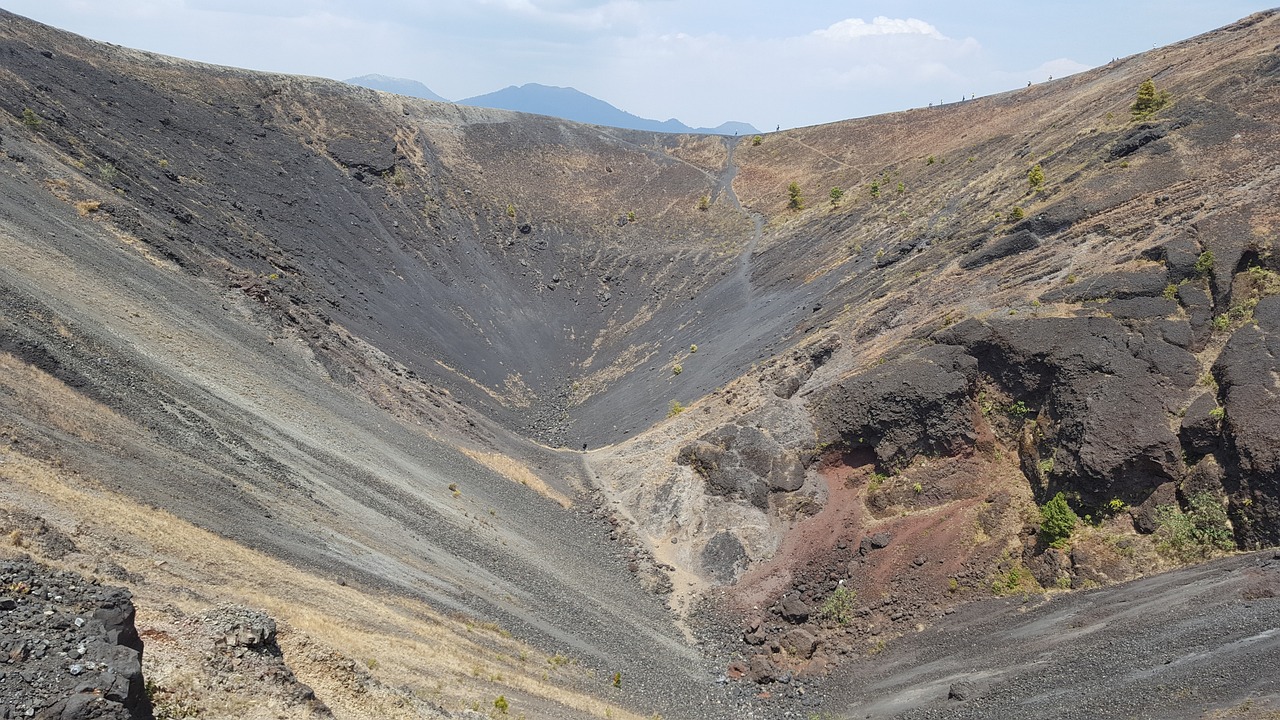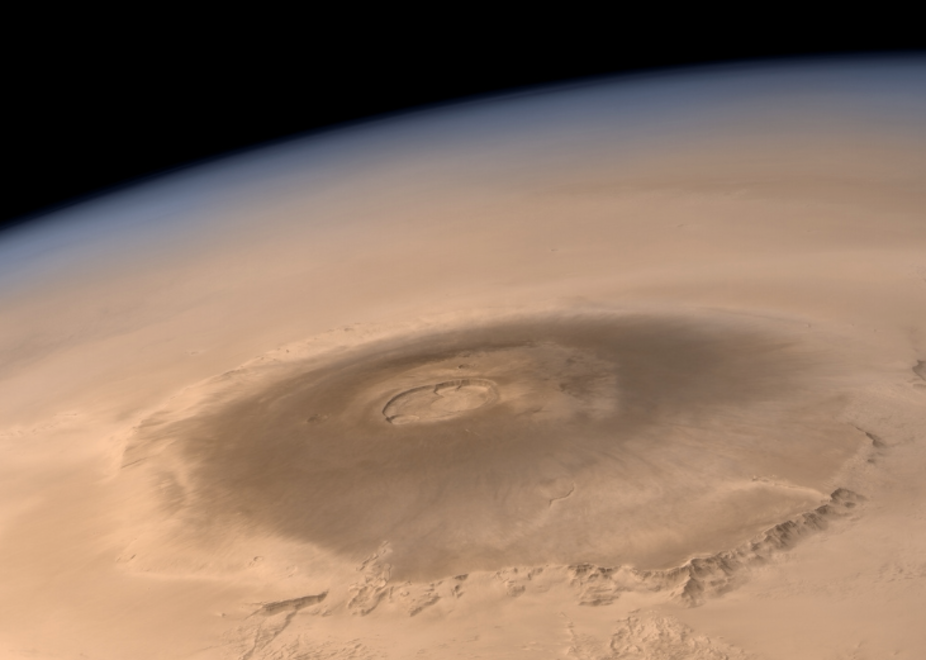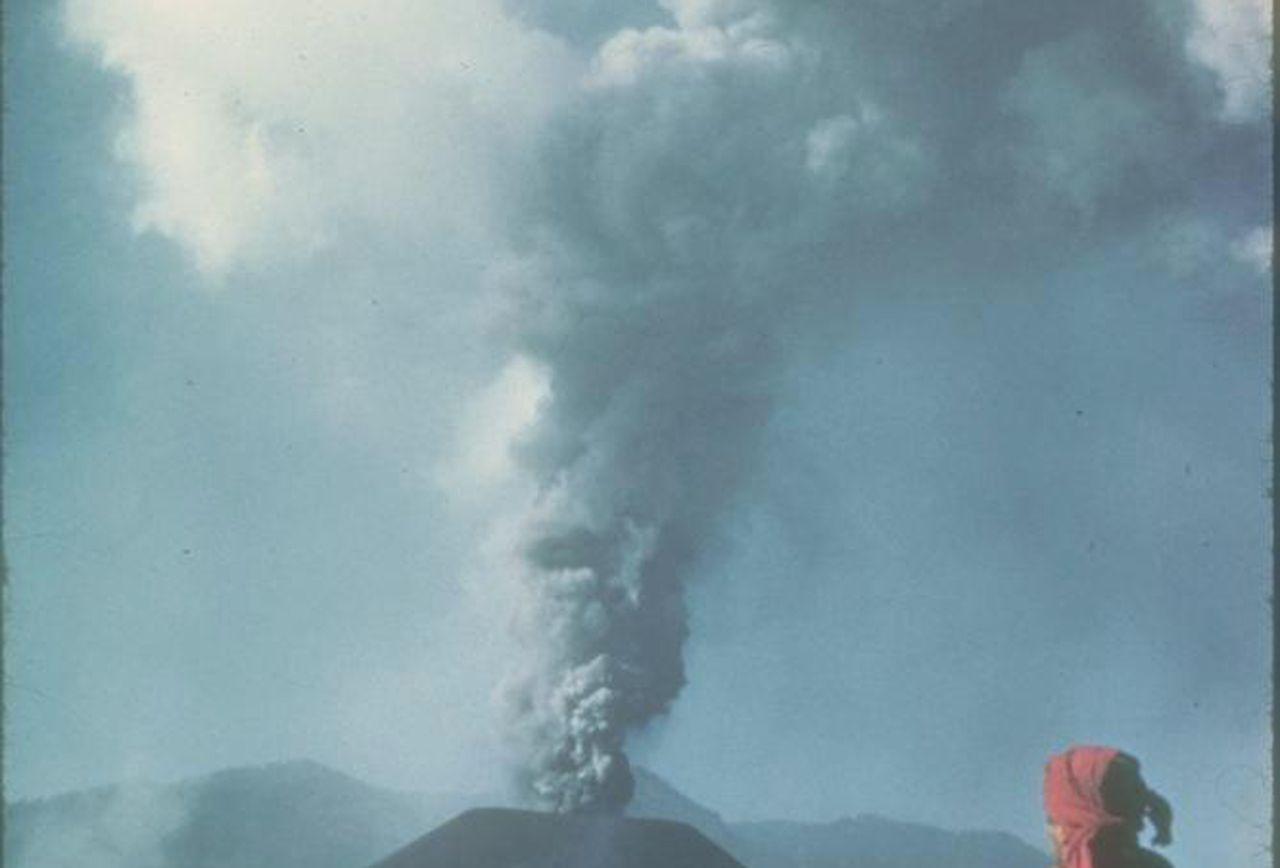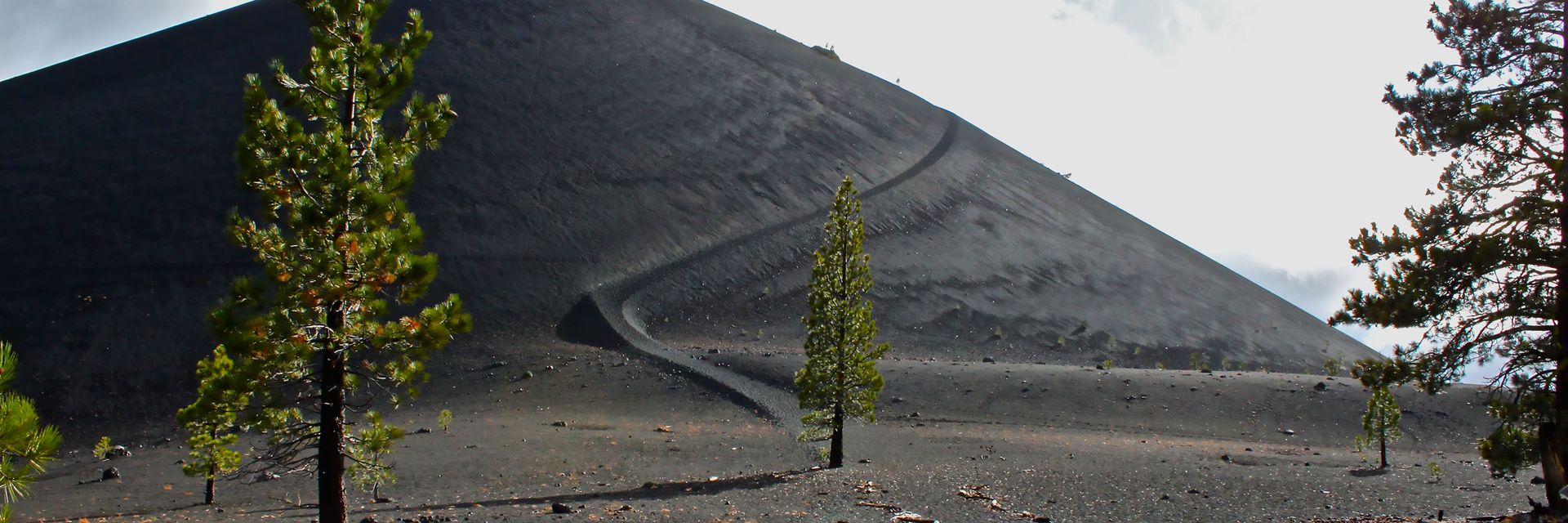When you picture a volcano, if you imagine thin lines of molten lava spurting out of a cone-shaped mountain, you’re probably thinking of a cinder cone. This type of volcano is made of magma and other fragments, which freeze and settle into cone-shaped mounds after exploding from vents on larger volcanoes. Though cinder cones are the smallest of the three types of volcanoes, they can erupt in some of the most dramatic fireworks you’ll ever see.
◊
One afternoon in 1943, Dionisío Pulido noticed something strange. The farmer, who lived just outside the village of Paricutín in Mexico, was going about his business in preparation for the spring sowing season when suddenly he saw a six-foot-wide gap open up in the center of a small and previously unremarkable hill. The sound of thunder filled the air. A few hours later, the gap had become a crater on top of a six-foot (and rapidly growing) mountain, which began belching sulfur and sparks into the air.
Unable to find his family – and completely terrified – Pulido ran into town, where, fortunately, his loved ones were waiting. His farm, however, would never be the same; for he had built his homestead atop an active cinder cone volcano. This volcano would eventually wreak tremendous destruction, and would garner worldwide attention both for the dramatic effect of its sudden debut and because it offered scientists the opportunity to study it from its birth.




Paricutín cinder cone volcano's crater.
(Image courtesy of yoliztlizama, via Pixabay)
From here, we’ll follow in these scientists’ footsteps and explore how cinder cone volcanoes form, what makes them different from other volcanoes, and how you can experience the magic of a cinder cone eruption for yourself – albeit from a safer distance than Señor Pulido was.
How Cinder Cone Volcanoes Form
Cinder cone volcanoes are sort of like the rock stars of the volcano universe. You might even say they go by the epigram live fast, die young in that they form quickly, sometimes bursting onto the scene quite literally without warning, and often disintegrate faster – unlike shield volcanoes, their behemoth brothers, which can be active for hundreds of thousands of years.
Cinder cone volcanoes are one of three types of volcanoes, the other two being shield volcanoes and composite volcanoes. While cinder cones contain just one stream of magma, the other two types are full of horizontal layers stacked on top of each other like plates.
Cinder cones usually form on the sides of larger volcanoes, such as shield volcanoes, arising when pre-existing vents spew out basaltic or andesitic lava. These initial explosions are called Strombolian eruptions. Relatively mild compared to traditional volcanic activity, Strombolian eruptions are still spectacles in themselves – as they throw cinders, lapili, and lava bombs into the air, all of which tend to glow incandescently in the night.
When the lava from these preliminary eruptions comes in contact with cool air, it quickly calcifies into fragments called cinders or scoria that settle into a cone-shaped formation. And so, like the phoenix of ancient myth, the cinder cone volcano is reborn from ash, rising up ready to spit fire.
.jpg)
Cinder cones at the foot of Tolbachik volcano in Kamchatka, Russia.
(Image courtesy of kuhnmi, via Wikimedia)
Oftentimes, the cinders and lava from the Strombolian eruptions solidify so quickly that bubbles of gas are trapped inside them, making the material that comprises cinder cone volcanoes porous and light. This means that cinder cones can be worn away by the weather or by other lava flows from their hosts, though some can last for thousands or millions of years.
Many Names for a Small Volcano
Cinder cone volcanoes are known by several different names. One other name is scoria cone volcano – scoria being the scientific term for the porous shards of frozen lava that form the bodies of new volcanoes. Cinder cones are also known as pyroclastic volcanoes, meaning “fire-broken rock.” That moniker refers to the way rocks that form cinder cone volcanoes started out their existence as fiery lava, which then cooled and settled into mountains of ash.
Cinder cones are also sometimes called ash cone volcanoes or parasitic cones, because they leech off bigger volcanoes, making their homes on the sides of shield volcanoes or other mountains.
What Cinder Cone Volcanoes Look Like
Though the volcano that sprouted in Dionisío Pulido’s field may not have seemed petite to anyone in its vicinity, cinder cone volcanoes are actually the smallest and simplest types of volcanoes. They typically slope at 35-40 degrees, though some older ones have softer curves, and they usually stand at around 100 to 400 meters tall, with circular craters at their peaks.
Cinder cone volcanoes’ sizes and shapes are largely determined by environmental conditions. Gravity or atmospheric pressure can alter their dimensions; for example, in 1989, the Viking Orbiter photographed cinder cones on Mars that appeared to stretch 2-5km wide, more than twice the typical width of earthbound volcanoes.

Cinder cone volcano on Mars.
(Image courtesy of Lawrence Livermore National Laboratories)
Like volcanoes on Earth, though, these Martian cinder cones showed pockmarks and horseshoe-shaped indents that signify the porous scoria that comprises them. Interestingly, some of the indentations in the volcanoes’ surfaces were unusual enough to lead scientists to believe that they may have been made by volcanically melted ice, hinting at the existence of water (and perhaps life) on Mars.
When Cinder Cones Erupt
Many cinder cone volcanoes are monogenetic, which means they erupt just once in their lifetimes – though some continue erupting steadily for decades. A cinder cone eruption is an unforgettable experience, the kind of theatrical, terrifying display of nature’s prowess that volcanoes are famous for.
When such a volcano blows its top, it produces strombolian eruptions of its own, which can shoot up to 1,500 feet in the air. The lava cools before it hits the ground, forming more of the same material that created the volcano itself and often generating fields of cinder cones.
Not only are cinder cone eruptions rare, but they’re often the most forceful and dramatic of all eruptions. Their magma contains highly concentrated basaltic lava that becomes thicker towards the opening at the top of the volcano (remember, heat rises) – meaning that when a cinder cone spits fire, it doesn’t hold back.
After the cinder cone volcano has released some of the pent-up, concentrated lava at its surface, it starts releasing steady flows of the remaining lava, which can stream out of holes in the volcano’s base or cracks at the rim of the crater. Once all the magma has oozed out, the cinder volcano usually stops erupting and is eventually smoothed back into the earth it came from.
Famous Cinder Cone Volcanoes
Cinder cone volcanoes, and volcanoes in general, are great at reminding us mortals that our lives are at the mercy of the natural world. Indeed, volcanoes have been unleashing their fiery wrath upon us for thousands of years.
Dionisío Pulido and his entire village experienced this destructive power firsthand. After its sudden arrival in Pulido’s field, the Paricutín volcano continued to grow, emitting booming growls that could be heard all across town. Over the next forty-eight hours, the Paricutín volcano belched out violent sprays of lava, and its explosions eventually reached 1200 meters high.

Actual photo of Paricutín erupting in 1943.
(Image courtesy of K. Segerstrom, U.S. Geological Survey, via Wikimedia)
After the most intense period subsided, the volcano began releasing lava flows that lasted nine years, covered 10 square miles, killed many livestock and crops, and completely destroyed the nearby town of San Juan. The volcano eventually went dormant in 1952, after depositing 20 square miles of volcanic sand on the area around it, and displacing hundreds.
"…when night began to fall, we heard noises like the surge of the sea, and red flames of fire rose into the darkened sky, some rising 800 meters or more into the air, that burst like golden marigolds, and a rain like artificial fire fell to the ground.” —Paricutín resident Celedonio Gutiérrez
Recently, scientists determined that another volcano, actually called Cinder Cone, erupted in 1666 in what is now Lassen Volcanic National Park in California. The eruption flattened surrounding forests and stymied the flow of a nearby creek, forming a dam that eventually led to the creation of today’s Snag Lake. It also formed several lava fields, which were created when ash fell on lava flows and oxidized. The resulting pumice congealed into the gorgeous rolling hills of today’s Painted Dunes, which are noteworthy for the vivid orange-brown swirls that spread across them, formed by an ancient mixture of gas bubbles, falling ash, and frozen lava.
The Parícutin volcano and the Cinder Cone are just two of the abundant array of cinder cone volcanoes that can be found around the world. The majority are located in the U.S. and Canada, but they can be found on all seven continents. Hundreds of cinder cone volcanoes surround the shield volcano Mauna Kia in Hawai’i, and more are developing each day; in 2018, Mauna Kilauea in Hawai’i, another shield volcano, developed a new cinder cone that towers about 50 meters high and has been steadily unleashing flares of volcanic lava. Other famous cinder cones include Mount Etna in Italy, Cerro Negro in Nicaragua, and the Capulin Volcano, one of 120 cinder cones in the Raton Clayton Volcanic Field in New Mexico.
Despite their disparate locations and ages, all these volcanoes have one thing in common: they are emblematic of Earth’s awesome power. When Dionisío Pulido saw that volcano emerge from his field, he was witnessing one of nature’s most striking reminders that magma surges far below our feet at all times – and at any moment, it could burst up from below.
Ω
Title image: A trail winds up the north side of Cinder Cone volcano. (Source: LassenNPS, via Wikimedia Commons)

